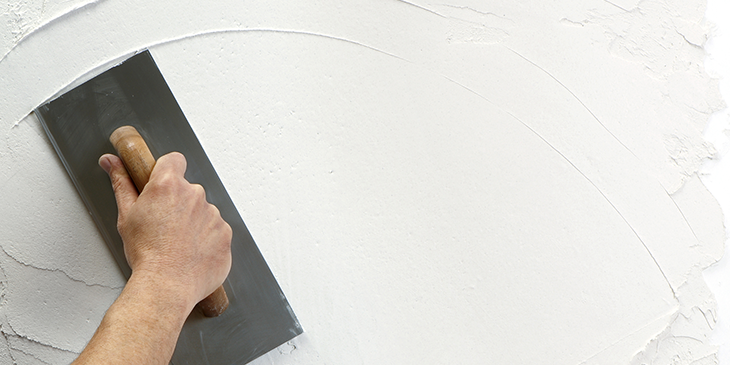Usual Mistakes to Stay Clear Of When Dealing With a Plastering Project
Usual Mistakes to Stay Clear Of When Dealing With a Plastering Project
Blog Article
Secret Tips and Tools for Effective Smudging in Your Home Improvement Endeavors
Accomplishing a perfect plaster surface in your home renovation projects needs a mix of the right devices and proven techniques. Comprehending the nuances of mixing plaster and using it in thin layers can significantly affect the final outcome.
Important Smudging Devices
A plasterer's toolkit is fundamental to attaining a smooth and long lasting surface on wall surfaces and ceilings. The important devices encompass a range of applies designed to help with the plastering process efficiently and efficiently. Key elements consist of a hawk, which is a level, square tool utilized to hold the plaster while using it to surfaces. This tool enables easy transport and application of the product.

In addition, a mixing bucket is needed for preparing plaster, making certain the ideal uniformity before application (Plastering). With each other, these necessary plastering tools allow both specialists and DIY enthusiasts to accomplish high-quality results in their gluing tasks.
Surface Preparation Strategies
Effectively preparing the surface area prior to gluing is important for making sure adhesion and achieving a remarkable surface. The very first step includes cleaning the surface to remove any dirt, oil, or old paint that might impede the plaster's capacity to bond properly. An extensive wash with an ideal cleansing service is advised, adhered to by allowing the surface area and washing to completely dry completely.
Following, examine the surface for any splits or imperfections. These ought to be filled with an appropriate filler compound and allowed to treat according to the supplier's guidelines. For porous surface areas, using a guide is important to improve and produce a consistent structure bond.
Furthermore, it is vital to make certain that the surface area is stable and structurally sound. Any loose products, such as flaking paint or damaged drywall, need to be fixed or eliminated. If collaborating with stonework surface areas, take into consideration utilizing a scratch layer to improve hold.
Combining Plaster Like a Pro

Making use of More Bonuses a clean mixing container, put the water first, after that slowly add the plaster powder while stirring continually - Plastering. This method helps to avoid clumping and makes sure an also distribution of materials. A mechanical mixer can be useful, providing regular results and saving time. Objective for a velvety, lump-free uniformity that enables easy spreading yet is thick sufficient to hold its form without running.
Once combined, enable the plaster to relax for a couple of minutes to allow the plaster crystals to moisten completely. This pause improves workability and minimizes the danger of breaking throughout application. By complying with these steps, you can blend plaster like a pro, establishing the structure for an effective smudging job in your house improvement undertakings.
Application Methods for Smooth Finishes
With the plaster mix prepared to the optimal uniformity, the following step entails selecting appropriate application techniques to accomplish a smooth surface. The selection of application devices significantly influences the final look of the plastered surface. For ideal results, a stainless steel trowel is typically suggested. This tool allows for a fine, even distribution of plaster across the surface while decreasing trowel marks - Plastering.
Begin by using a generous quantity of plaster to the surface area utilizing the trowel, guaranteeing it sticks well. When the preliminary coat is used, utilize a sweeping activity to smooth the surface area, applying also pressure.
For the final touches, a wet sponge can be used to refine the surface further. Lightly haze the plaster with water and gently massage the surface to attain a sleek impact. Constantly keep in mind to operate in small areas to keep control over the application process, ensuring a smooth, specialist surface throughout your plastering project.
Typical Blunders to Prevent
When beginning on a plastering task, staying clear of common mistakes is essential for accomplishing a perfect coating. Among the most common errors is ignoring surface area preparation. Failing to tidy site and repair the substrate can cause inadequate bond and uneven surfaces. Make sure that all dirt, grease, and loosened products are removed before applying plaster. the original source
An additional usual blunder is using plaster also heavily. Thick layers can crack as they dry, jeopardizing the integrity of the surface. Instead, choose several slim layers, permitting each coat to dry totally prior to using the following.
Furthermore, bad blending strategies can cause irregular structure and workability. Always follow the maker's directions for mixing ratios and completely blend the plaster to achieve an uniform consistency.

Timing additionally plays a vital role; plaster needs to be used while the substratum is damp to improve adhesion. Premium trowels and drifts can make a substantial distinction in accomplishing a smooth coating.
Conclusion
Effective smudging requires a comprehensive understanding of necessary devices and techniques. By making use of proper tools, ensuring thorough surface prep work, and adhering to advised mixing ratios, optimum results can be achieved. Using suitable application approaches further boosts the coating, while recognition of typical mistakes can protect against setbacks. Proficiency of these aspects not only adds to the aesthetic charm of a space however additionally ensures resilience and long life in plastering tasks, making them important to successful home enhancement ventures.
A float is one more important device, which helps in leveling the plaster and attaining a consistent surface area.

By complying with these actions, you can blend plaster like a pro, setting the structure for an effective smudging job in your home improvement ventures.
Lightly mist the plaster with water and delicately scrub the surface to achieve a sleek result.
Report this page